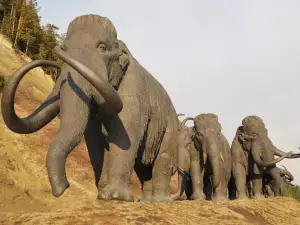Dolphins are exceptional animals. They belong to the aquatic mammal infraorder Cetacea. It is believed their independent evolution began about 10 million years ago during the Miocene period.
There are 36 recognized species of dolphins, the majority of them oceanic inhabitants. There are dolphins who live in freshwater but these aren't to be confused with River Dolphins. It's important to note that Oceanic dolphins (Delphinidae family) also contain so-called whales - the Melon-headed whale, killer whale, pilot whale.
What all dolphins share in common is their elongated, spindly body, which is built for fast swimming. Their double fin serves as their primary means of propulsion, having changed over the course of evolution into a tail fin. Their front limbs are pectoral fins, they lack pelvic fins, with only 2 vestigial pelvic bones remaining.
The largest members of the Oceanic dolphins family are the orcas or killer whales. They can weigh up to 4 tons and reach 28 ft long. The most commonly seen dolphins are Bottlenose dolphins, who can reach up to 13 ft long. They weigh from 264 - 880 lb.
Common dolphins are more modest in size. They reach lengths of up to 8 ft and weigh up to 308 lb. The smallest representative of the Delphinidae family is Hector's dolphin. It is just 5 ft long and doesn't weigh over 132 lb. Hector's dolphin is endangered.
















